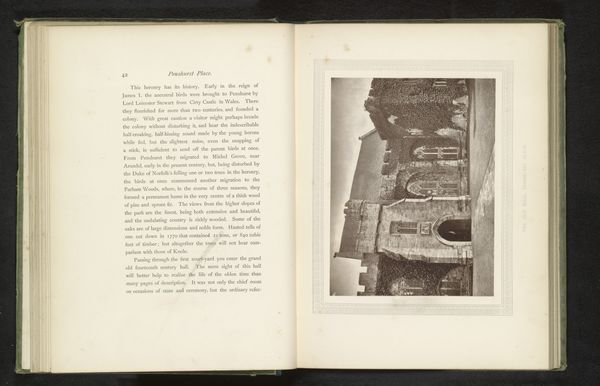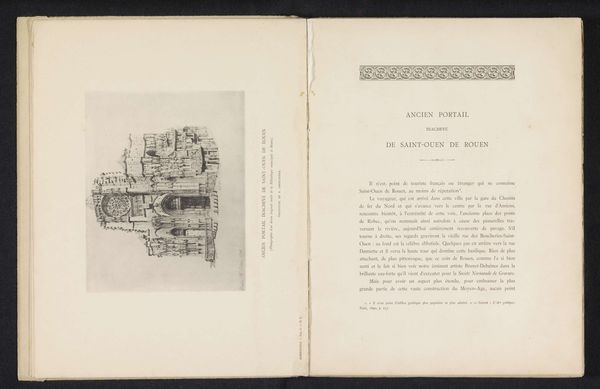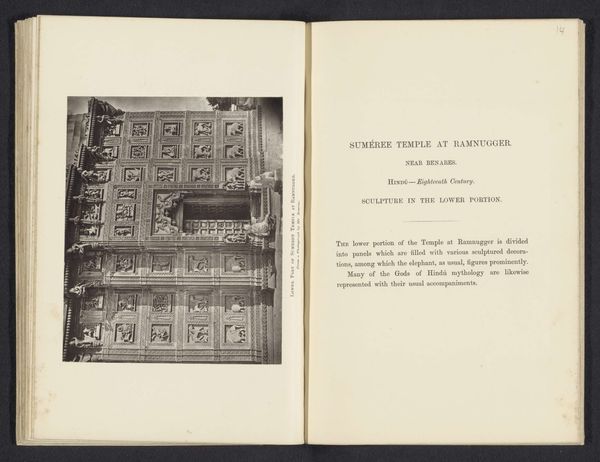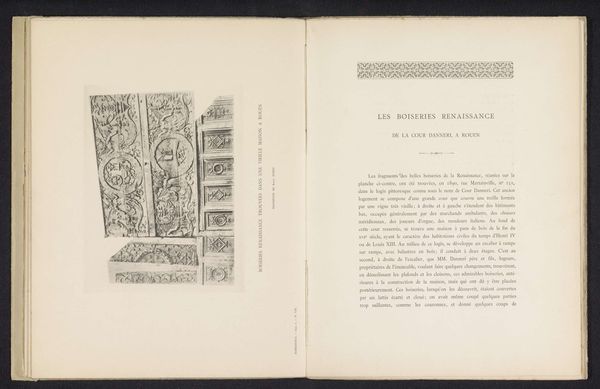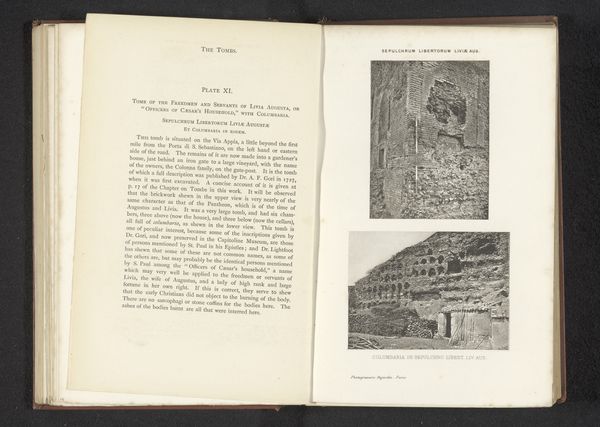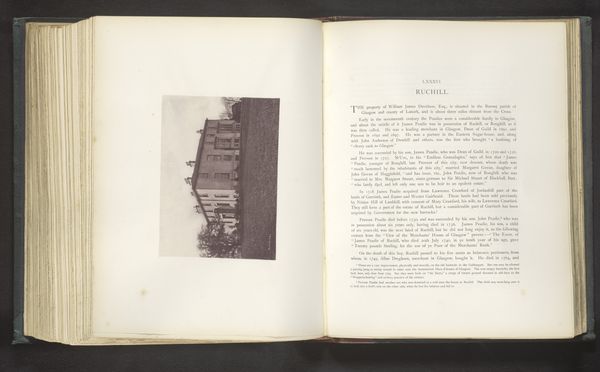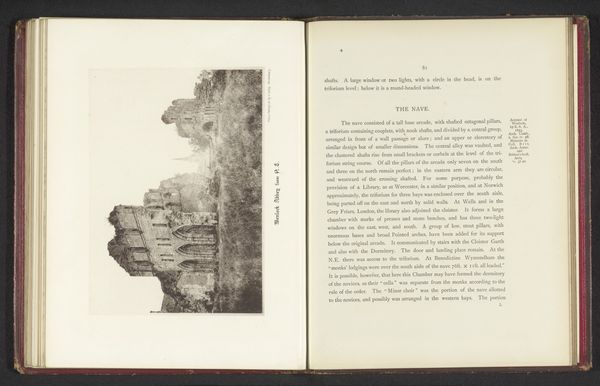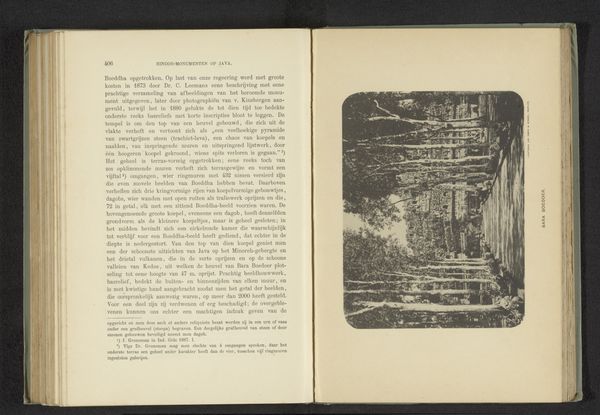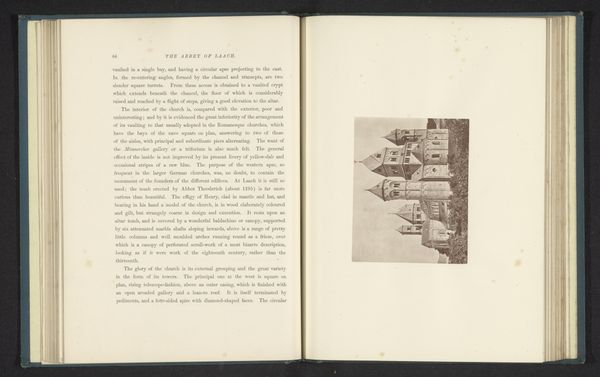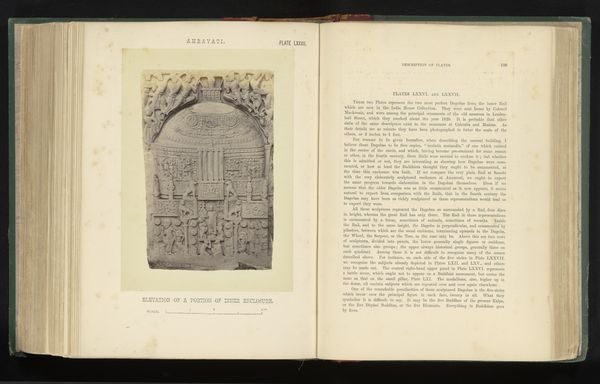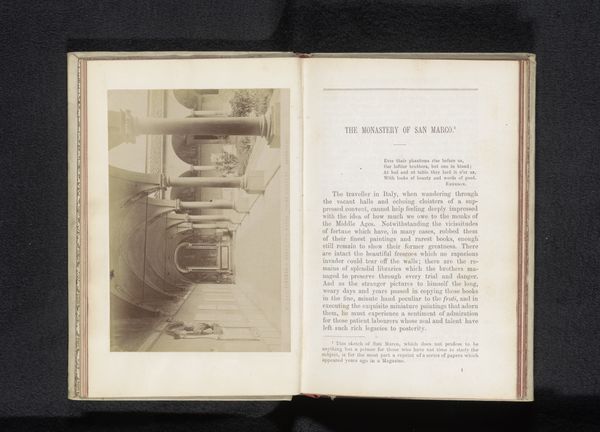
print, photography
# print
#
landscape
#
photography
#
ancient-mediterranean
#
islamic-art
#
building
Dimensions: height 105 mm, width 140 mm
Copyright: Rijks Museum: Open Domain
Curator: This compelling photograph, taken before 1869 by John Burke, showcases the "Temple of Marttand - view looking East," found within an album titled "Kashmir." Editor: The structure commands the space, doesn't it? Even in its ruined state, the geometry—the stark horizontals and the shadowed curves—is arresting. There's a somber, monumental quality that immediately draws the eye. Curator: Indeed. This temple, dedicated to the sun god Surya, was a significant site for worship in the Kashmir region, representing the grandeur of the Karkota dynasty’s reign and reflecting complex political alliances. Later accounts even indicate that the temple complex was systematically destroyed and desecrated under Islamic rule. Editor: Destruction is almost palpable. Observe the way light carves out textures of weathered stone and collapsed structure, and it echoes the violent histories that brought the temple to its current state. I can't help but appreciate how the artist has composed this to maximize chiaroscuro. Curator: It’s imperative that we contextualize this image within British colonial photography. Burke’s work, while documenting these significant cultural sites, also served the colonial agenda, visually mapping and claiming the territory and resources through the very act of photography. Editor: The photograph itself is undeniably powerful as a study of form and light, yet the act of creating the picture should be examined through our contemporary ethical lenses as well. These two points of view may conflict at first, but can offer a complete view of the art object as intended in its original context as well as today. Curator: Exactly, viewing Burke’s photograph reminds us of both the temple's historical and spiritual importance, but it urges us to reflect on the intertwined history of colonialism and cultural representation. Editor: Agreed, it leaves you contemplating not only the beauty and architectural sophistication of what was, but also the multifaceted, at times unsettling, legacy embedded within its representation.
Comments
No comments
Be the first to comment and join the conversation on the ultimate creative platform.
